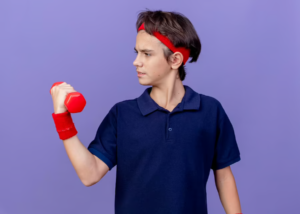
In today’s fast-paced world, keeping track of our child’s growth and development can sometimes be challenging. With childhood obesity rates on the rise, alongside concerns about underweight and stunting, it’s more important than ever for parents to have the right tools at their disposal. That’s where InBody hi comes in, revolutionizing the way we approach childhood growth monitoring and intervention.
Understanding Childhood Obesity, Underweight & Stunting
Childhood growth disparities, encompassing obesity, underweight, and stunting, are multifaceted issues that require attention and action. While some children struggle with excess weight, others face challenges related to inadequate nutrition and growth faltering.
But, before delving into the complexities of childhood growth disparities, it’s essential to understand the key terms involved: childhood obesity, underweight, and stunting.
Childhood obesity is a condition characterized by excessive body fat accumulation in children and adolescents. It is typically assessed using Body Mass Index (BMI), which compares a child’s weight to their height. Moreover, healthcare professionals often rely on BMI-for-age growth charts provided by the Centers for Disease Control and Prevention (CDC) or the World Health Organization (WHO) to assess a child’s BMI status and identify potential risks of obesity.
In contrast to obesity, underweight refers to a condition where a child has insufficient body weight for their age, height, and developmental stage. Like obesity, underweight status can also be determined using BMI-for-age or weight-for-age growth charts.
 Meanwhile, stunting is a form of growth failure characterized by low height-for-age. It occurs when children fail to reach their full growth potential due to chronic malnutrition or recurrent infections. Stunting is often measured using height-for-age growth charts, with children below the 5th percentile being considered stunted.
Meanwhile, stunting is a form of growth failure characterized by low height-for-age. It occurs when children fail to reach their full growth potential due to chronic malnutrition or recurrent infections. Stunting is often measured using height-for-age growth charts, with children below the 5th percentile being considered stunted.
By identifying children who are overweight, underweight, or stunted early on, healthcare professionals and caregivers can implement appropriate interventions to promote optimal health and well-being in children.
The Role of InBody hi in Monitoring Your Child’s Growth and Development
InBody hi, recently launched by InBody, is a game-changer in the field of childhood growth monitoring. This innovative app provides parents with invaluable insights into their child’s growth and development, allowing them to track key metrics such as height, weight, and BMI with ease. By recording growth data daily and visualizing it through easy-to-read growth charts, parents can gain a deeper understanding of their child’s development and identify potential concerns early on.
Key Features of InBody hi:
- Track Child Growth and Development Over Time: Easily monitor your child’s growth and development trajectory over time, ensuring they are growing healthily and meeting key milestones.
- Compare Growth with Peers: The app allows parents to compare their child’s growth with peers through growth reports, providing insights into how their child measures up to others of the same age and gender.
- Capture Precious Memories in the Growth Album: Preserve special moments of your child’s journey by capturing photos along with their height and weight. Create a beautiful album of memories effortlessly and download or share your child’s growth journey with loved ones.

Conclusion
In the journey of parenthood, effectively addressing childhood growth disparities demands vigilance, education, and support. With the launch of InBody hi, InBody hopes to empower parents to actively monitor their child’s growth and address concerns proactively.
Download InBody hi today and embark on a journey to support your child’s
healthy growth and development!





















